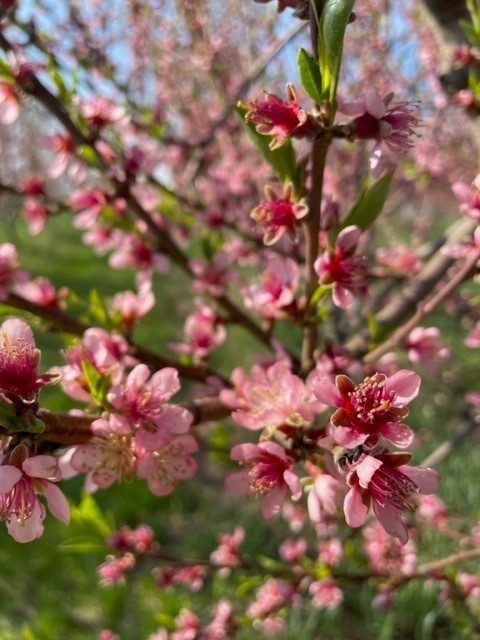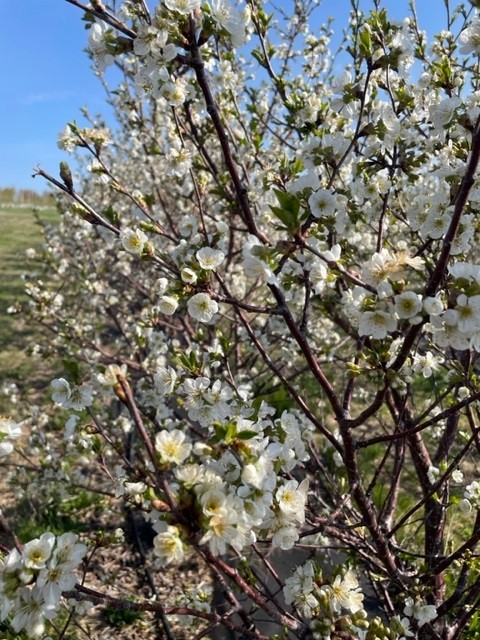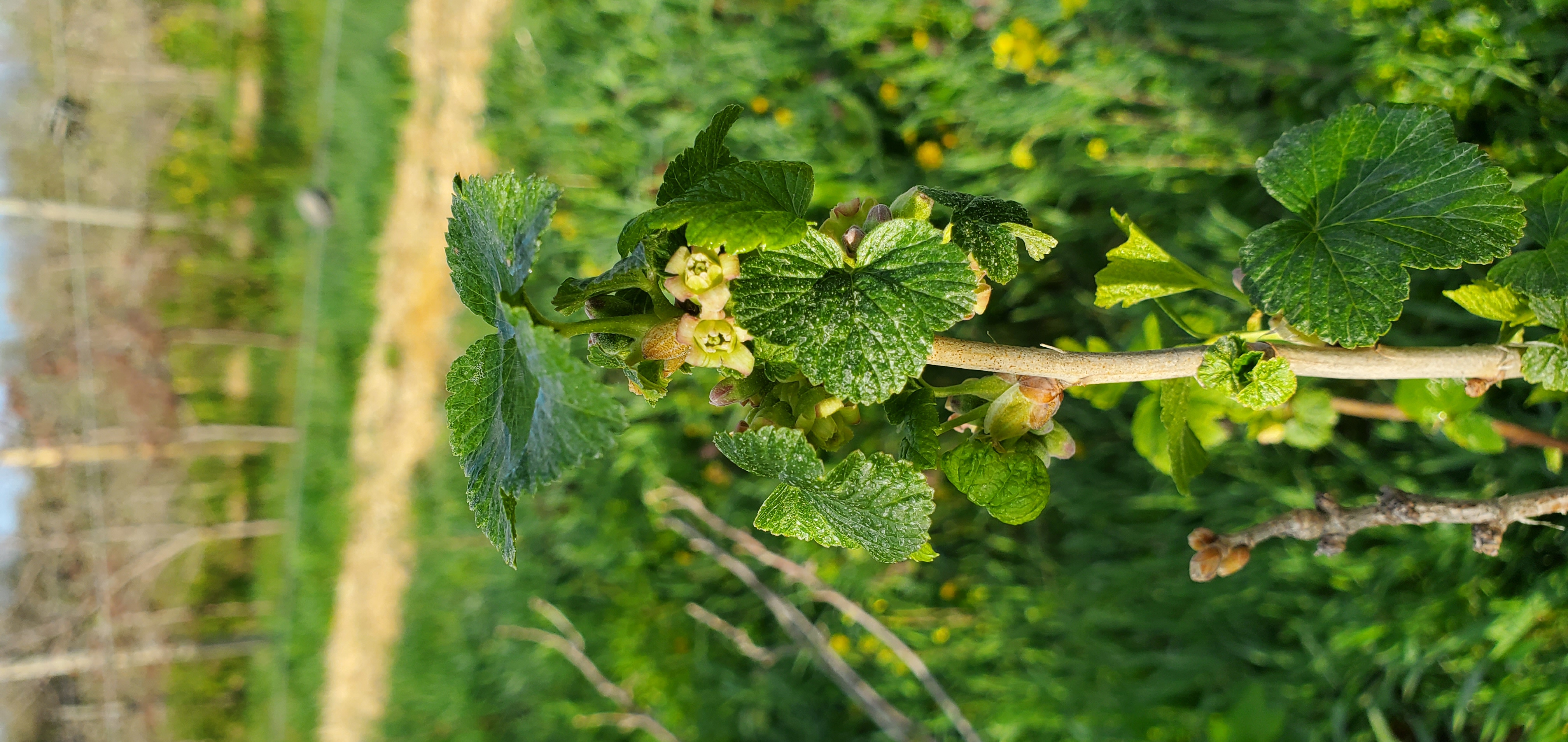Southwest Michigan fruit update – April 25, 2023
Growers have been watching the cool morning temperatures closely, but no significant damage has been reported so far.

Weather
Last week (April 16-22) was cool with several mornings hovering around 30 degrees Fahrenheit for low temperatures. Wednesday morning (April 19) was the coldest with several stations in the region recording temperatures between 27-29 F.
Wednesday and Thursday (April 19 and 20) were the warmest days with high temperatures in the upper 70s F on the second day. A cold front brought some scattered rains and a return to seasonal conditions. Rainfall totals for the week are around a half inch with most of the rain coming on Friday.
The region saw a below average number of degree days last week, 40 GDD base 42 and 20 GDD base 50, respectively. We are right in line with the 20-year average.
|
Southwest Michigan GDD summary from March 1 – April 24, 2023 |
|||
|
Station |
GDD 42 F |
GDD 45 F |
GDD 50 F |
|
Benton Harbor (SWMREC) |
295 |
230 |
154 |
|
Lawton (Lawton) |
285 |
222 |
150 |
|
Fennville (TNRC) |
241 |
185 |
121 |
|
Average for the SW region |
281 |
218 |
145 |
|
Average last week |
239 |
186 |
125 |
Wednesday morning will see temperatures near 30 F for many locations. The remaining mornings in the next week are expected to have low temperatures in the low 40s F. Most days will see 50 F. Friday will be the warmest day with mid-60s F expected. Occasional rains are expected over the weekend and into the start of next week.
Tree fruit
Temperatures last Wednesday, Thursday and Friday (April 19-21) were decent for bee activity in stone fruit, with some interference from rain showers. Low temperatures reached down into the high 20s F for a few sites, but overall area crop prospectives are still good. Fruit bud longevity waiting for good pollination conditions is still a concern. See the Michigan State University Extension article, “What can fruit growers do if a freeze is coming?” for more information.
Oriental fruit moth catch likely started with the warm weather late last week—this is delayed later than normal due to cool evening temperatures. Plum curculio is apt to become very active when evening temperatures start to climb, but damage is not conspicuous until fruit gain enough size to attract attention. In general, full bloom is the preferred timing if a single brown rot spray is used during bloom, but somewhat later is justified if weather is not favorable for application.
Apricots and aprium fruit are in the shuck. Crop prospects are still good.
Peach and nectarine are at full bloom to early petal fall in central Berrien County. Plum curculio, tarnished plant bug and oriental fruit moth are the targets for petal fall sprays. The need for bacterial spot management generally becomes more important after bloom to protect leaves from becoming a source of infection for fruit after shuck split. See the MSU Extension Fruit Management Guide for information on copper rates and other chemical options. Reapplications with copper should wait until rain washes off most of the previous application.

Cherries are at full bloom for Montmorency tart cherry and early petal fall for sweet cherry in Berrien County. Fungicide coverage for brown rot and cherry leaf spot are the primary concerns. Plum curculio will become a concern starting at petal fall.

In plum, Japanese plum are in petal fall and European plums are in late bloom in central Berrien County. Disease coverage concerns are both black knot and brown rot. Like other stone fruit, management of plum curculio starts at petal fall
Apple early blooming varieties Zestar, IdaRed and Macintosh are at late pink to king bloom in Berrien County, with other varieties generally in pink. The Cornell apple carbohydrate model is available in the apple section on MSU Enviroweather to help timing thinning spray. Disease management concerns now are scab, powdery mildew and rust. Using copper fungicides can cause damage to green tissue after tight cluster. Protectants are preferred over systemic fungicides this time of year for scab control. Longer rains in the Allegan County area have resulted in at least one scab infection period, whereas wetting periods have been shorter in more southern parts of the region.
Pear (Bartlett) is in full bloom in the south end of the region. Scab and pear psylla management are the major concerns. Fire blight management is usually needed when rain and temperatures above 60 F occur during bloom.
Small fruit
Grape leaves of concord juice grapes and early hybrids like Marquette have begun to unfold from the buds. Other hybrids and early vinifera varieties are between full bud swell and budbreak.
The disease focus is on phomopsis, black rot, anthracnose and powdery mildew. With the mild winter, expect high levels of surviving inoculum on shoots, dried clusters and canes. The warmer weather and predicted rain at the end of the week indicate good conditions for possible disease development. Once leaf tissue is visible, contact fungicides that include broad-spectrum/contact fungicides like the EBDCs (FRAC M3) and captan are effective and function similar to dormant applications by sanitizing the vineyard before bloom. For organic growers, early season oils may also be used, which try to suffocate overwintering fungal spores and infected tissues. Be careful of utilizing oil applications within 14 days of any sulfur application due to phytotoxicity issues.
Blueberry leaf buds have opened. One to two leaves are visible. Fruit buds are separating. More advanced locations are at early to late pink bud. The window for application of copper, Sulforix or lime sulfur products to suppress early season diseases is closing. Be prepared to start scouting for mummy berry soon. As leaves expand, mummy berry and phomopsis shoot strikes are the main disease focus.
Strawberries have greened up and new leaves are starting to emerge from the crown. Early sites where strawberries are being grown on plastic mulch are more advanced. Some blooms have been seen in those situations. With the cool weather expected this next week, floating row covers or other protection may be needed if frost conditions develop. Growers are looking at early season herbicides to control overwintering weeds. When selecting an herbicide, make sure and check the pre-harvest interval (PHI). We are getting to the part of spring where some herbicide PHIs are cutting it close to predicted harvest dates.
Brambles: Buds have separated from the cane and are starting to open. Some early varieties have expanded leaves. Lime sulfur treatments for anthracnose can still be applied to late bud break varieties, but phytotoxicity becomes a concern when green tissue is present.
Currants and gooseberries are blooming.

Hops bines up to 2 feet long have been observed. These first bines will be mowed or removed by herbicide. The resulting new bines will be more productive than these early shoots. Some removal of these early bines is already underway.
Announcements
Our regular southwest Monday fruit IPM updates are once again a hybrid format. The meetings are held in-person with virtual attending also available online. Our first meeting was Monday, April 10, at 5:30 p.m. and will continue through the rest of the season. You need to register to receive the Zoom link and password for these meetings. The webinars are free and one pesticide applicator credit is available for each meeting. The same Zoom link will be used with all the Monday meetings—you only need to register once.
Derek Plotkowski, the fruit educator in southeast Michigan, is organizing an Orchard and Fruit Production Classifieds & Exchanges service. Looking for something that you can’t get ahold of in time? Maybe one of your neighbors has some on hand. Have extra of something you’d like to offer? Fill out this form and we’ll add your needed or extra items to the Orchard Classifieds/Exchanges list. The items currently on the exchange can be found here: Orchard Classifieds and Exchanges.
This work is supported by the Crop Protection and Pest Management Program [grant no 2021-70006-35450] from the USDA National Institute of Food and Agriculture. Any opinions, findings, conclusions, or recommendations expressed in this publication are those of the author(s) and do not necessarily reflect the view of the U.S. Department of Agriculture.



 Print
Print Email
Email
